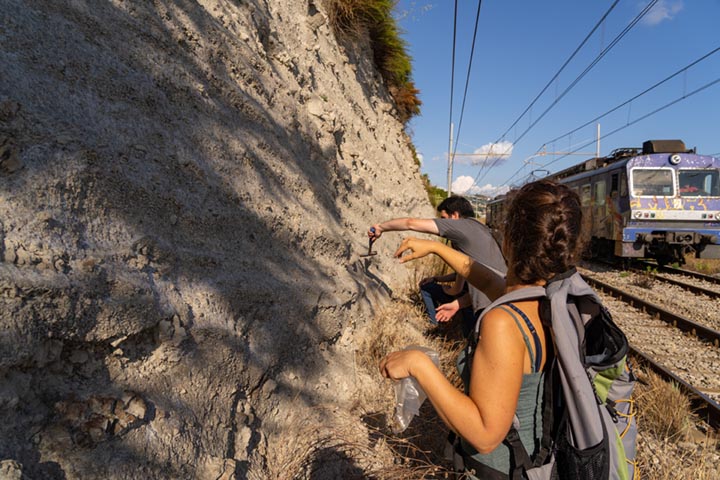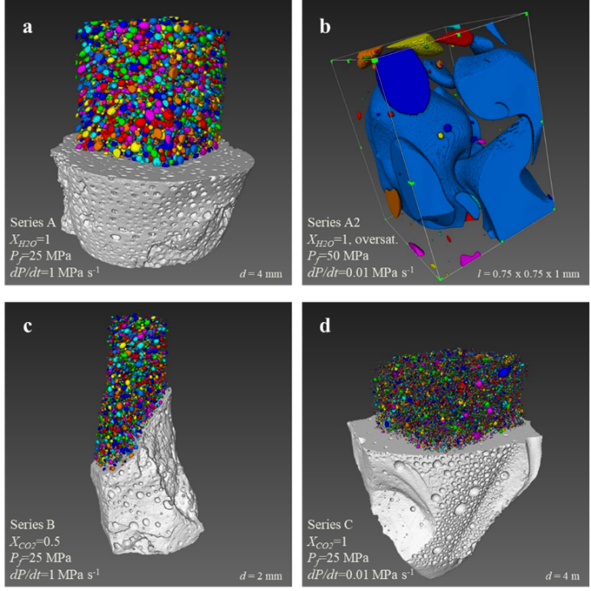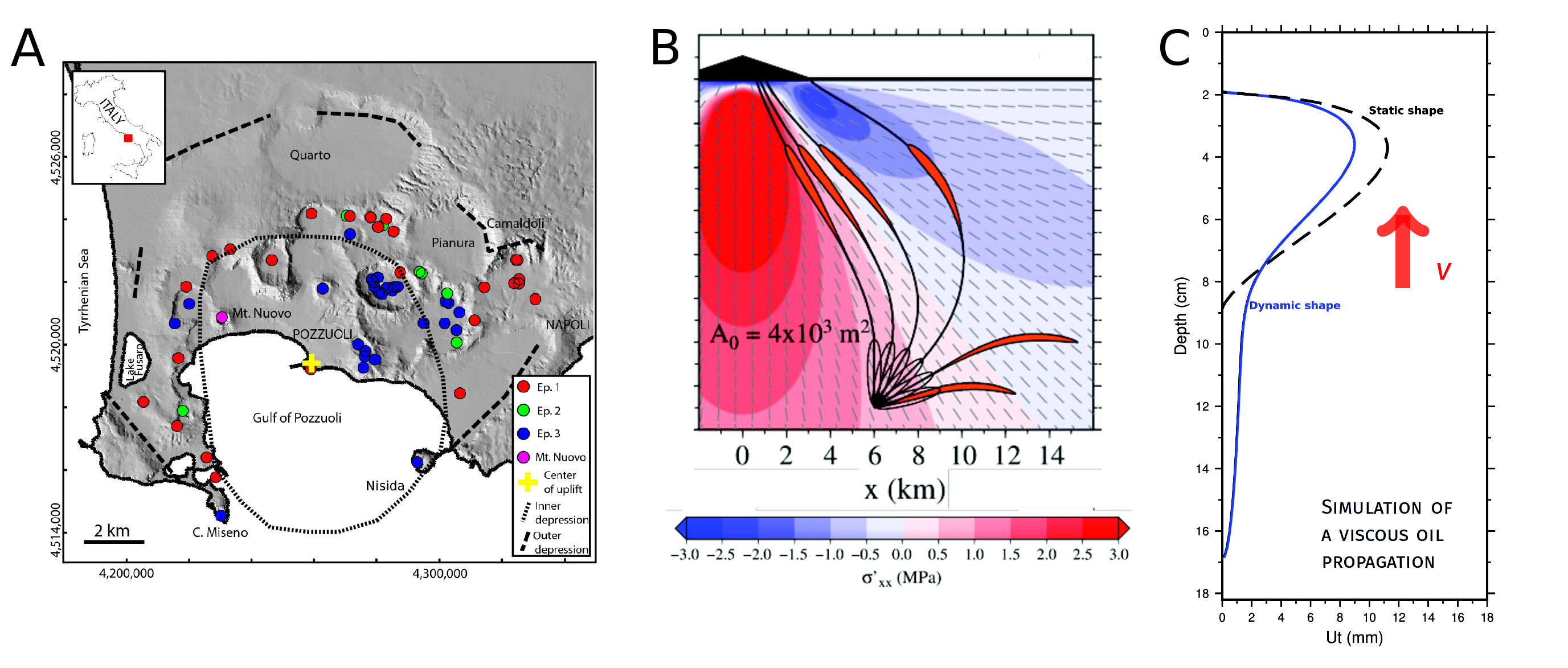 Hydromagmatic deposits of the Monte Nuovo eruption
Hydromagmatic deposits of the Monte Nuovo eruption 3D volume rendering of representative samples from experimental H2O-rich (a, b; fast and slow decompression, respectively) and CO2-rich (c, d) series.
3D volume rendering of representative samples from experimental H2O-rich (a, b; fast and slow decompression, respectively) and CO2-rich (c, d) series.
A)Outline of CF caldera with eruptive centers from Rivalta et al., 2019; B) Dyke propagation model output from Maccaferri et al., 2011; C) Different shapes for a dynamic (blue) and stationary (black) fluid filled crack, figure provided by Severine Furst, ISTerre, Chambery, unpublished.
Volcanological and petrological studies
We are performing a detailed study of the 2D and 3D microstructural (e.g. vesicle and crystal size distributions and number density) and geochemical (e.g. geothermobarometers) characteristics of volcanic rocks of reference eruptions of the eruptive history of the Phlegraean caldera, selected in function of the position of the vent, the composition and the Volcanic Explosivity Index (VEI). The research will include the sampling and study of the representative products of the different phases of the eruption (e.g. magmatic and phreatomagmatic phases), with particular attention to the initial phases as they are indicative of the processes and timescale of volcanic conduit opening and therefore of the appearance of the first warning signals. The results will be integrated with investigations (e.g. 3D/4D multiscale exploration of microstructure and physical properties) of subsurface caldera-filling rocks and numerical models on magma ascent. These approaches will allow to define the possible pre-eruptive scenarios (e.g. conditions of pressure, temperature and volatile content of the magma chamber and trigger factors of the eruptions) and syn-eruptive scenarios (e.g. processes and timescale of magma rising in the volcanic conduit) with implications on unrest indicators and possible duration of precursor phenomena, also as a function of the magnitude of the expected eruption.
Solubilities and Decompression experiments
We are performing HT-HP experiments at the University of Göttingen to simulate magma degassing and crystallization in trachytic melts under controlled conditions, and thus to better constrain field observations (natural rocks and surface observables). These are among the first experiments that use not only H2O but also CO2 as volatile phase. The experimental samples are chemically characterized using FTIR/Raman spectroscopy and TGA to explore glass volatile contents and nanolite occurrence. Textural analyses are performed through X-ray microtomography (micro-CT) at the INGV-OV, a cutting-edge technology to quantify microstructure and physical properties of samples in 3D. Isothermal decompressions are conducted at super-liquidus temperature, in wide ranges of final pressures (200 to 25 MPa), decompression rates (0.01 to 1 MPa/s) and volatile contents. The obtained systematic dataset will be integrated with literature data for similar experiments and melts (trachy-phonolites). We are also implementing a numerical tool, based on the methods of moments and tested on experimental results. Isobaric-isothermal phase-equilibria experiments are performed systematically changing wide ranges of temperatures (1100 to 800 °C) and volatile contents. We are collecting data from experiments at 200 MPa, that will be possibly extended to 100 and/or 300 MPa. Such a robust dataset will be useful to shed new lights on magma storage processes at CF.
Numerical simulations
In the context of applying numerical simulations of magmatic dykes ascent within the framework of LOVE-CF project, we first focused on the implementation of a numerical model setup suitable for Campi Flegrei, considering in particular the location of Monte Nuovo eruption site, in order to constrain the geometry of our 2D numerical domain. We computed the so called “backgroud stress” of the crust, which consist in assigning the full crustal stress tensor on a grid within the model domain. We tested the numerical model for dike propagation with this setup, considering two different conditions for the dyke propagation: buoyancy driven, and magma source driven. We explored a range of different constrains for the parameters characterizing the magma and the host rocks properties. We tested a newly implemented “propagating fluid-filled crack” solution which we introduced in the dyke propagation code and allow for accounting for the magma viscosity and dyke propagation velocity (our dyke propagation model would otherwise use a “stationary fluid-filled crack” approximation, neglecting the effect of magma viscosity and propagation velocity on the shape of the intrusion).
